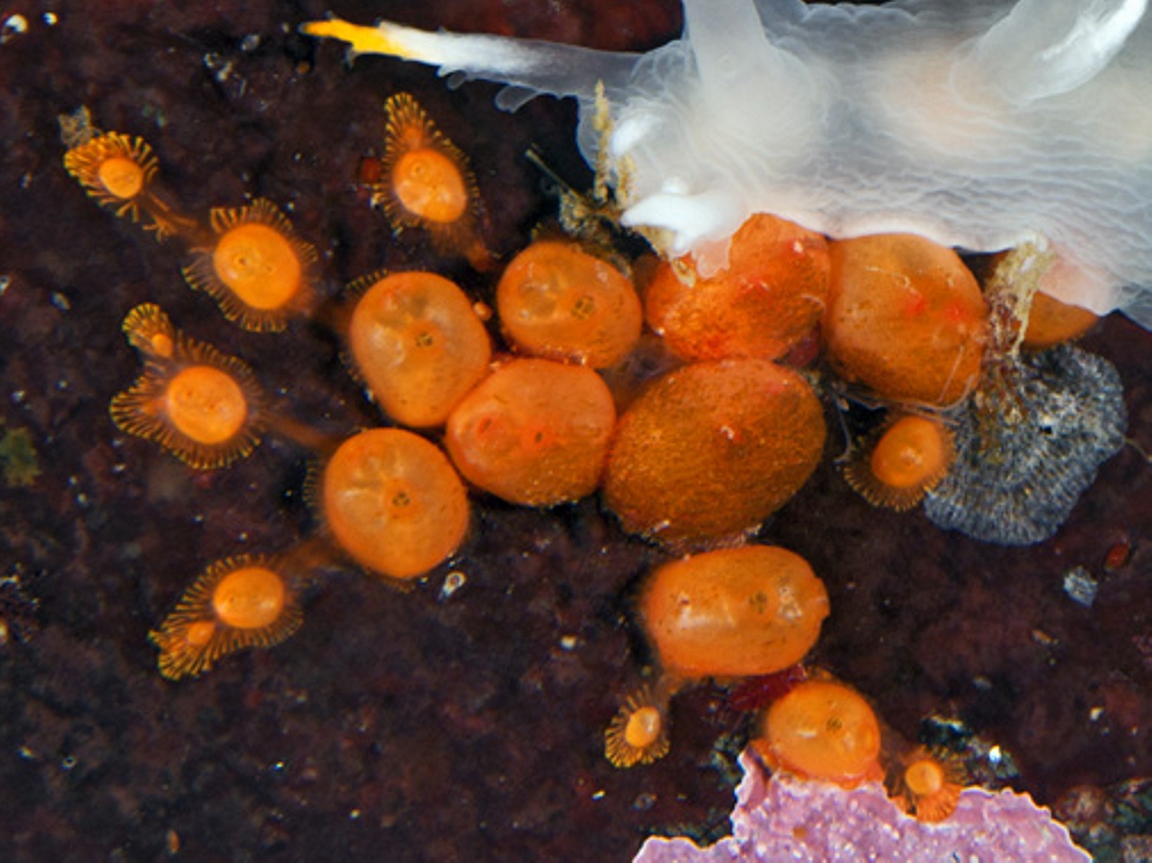
Oozoid budding in Metanrocarpa taylori:, :”Larvae of the stolidobranch ascidian Metandrocarpa taylori molt a thin sheath upon settling, then metamorphose and radiate a larval complement of vascular ampullae upon the substrate. These ampullae thereafter regress, “rest” in a reduced condition for several weeks, and then regrow into the oozooids definitive array of vascular ampullae in accompaniment to the development of the oozooidal vascular nest of test-vessels. Pallial buds emerge some four months after the larva settles; the oozooid has by then grown to a length of at least 2 mm and its vascular nest is surrounded by at least 16 vascular ampullae. Oozooids bud one to five buds (mean, 2.6) in a rather short period of blastogenic vigor, then persist in the colony. Late buds are requently aborted.”
-Hiroshi Watanabe and Andrew Todd Newberry 1976. Budding by Oozooids
in the Polystyelid Ascidian Metandrocarpa taylori Huntsman. Journal
of Morphology 148(2):161-176. image by Ryan Murphy.
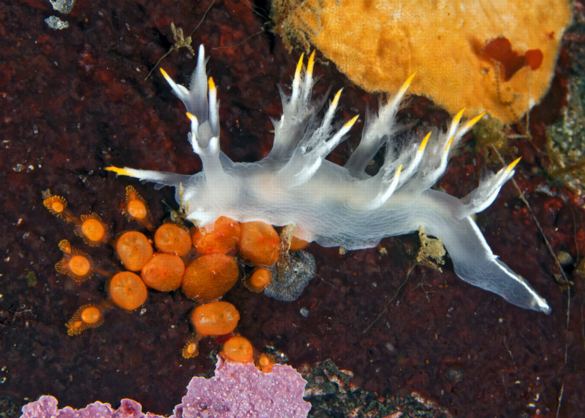 The photo above is derived from the one above. Here the nudibranch Dendronotus albus is feeding on the tuniates.
The photo above is derived from the one above. Here the nudibranch Dendronotus albus is feeding on the tuniates.
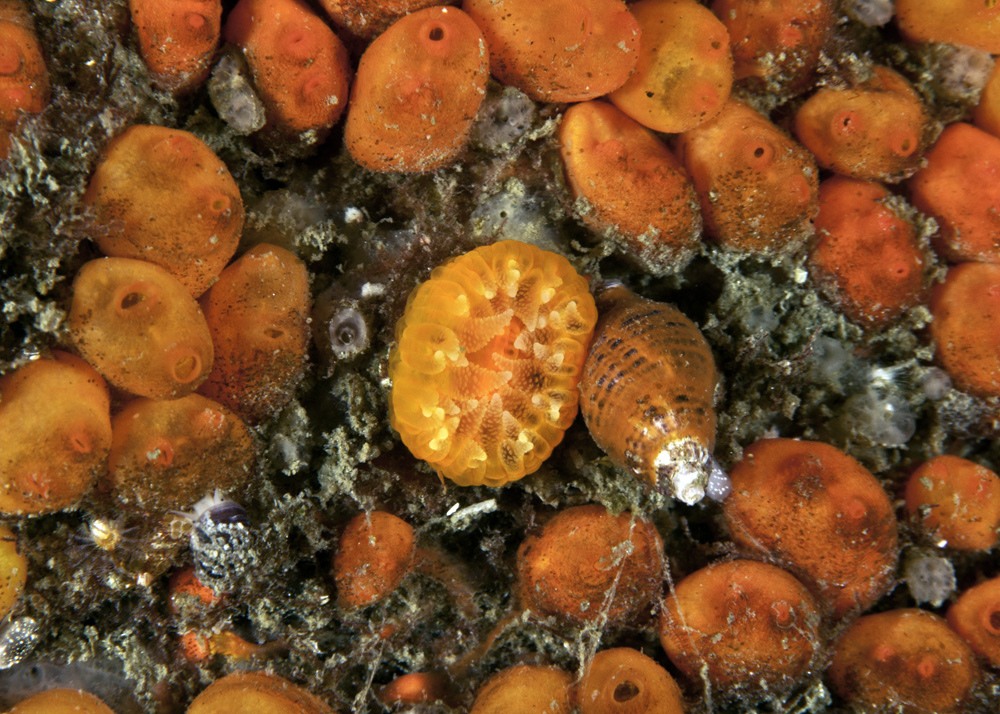
A cup coral ballanophyllia growing amongst a colony of Metandrocarpa All images above were taken in 2010 by Ryan Murphy
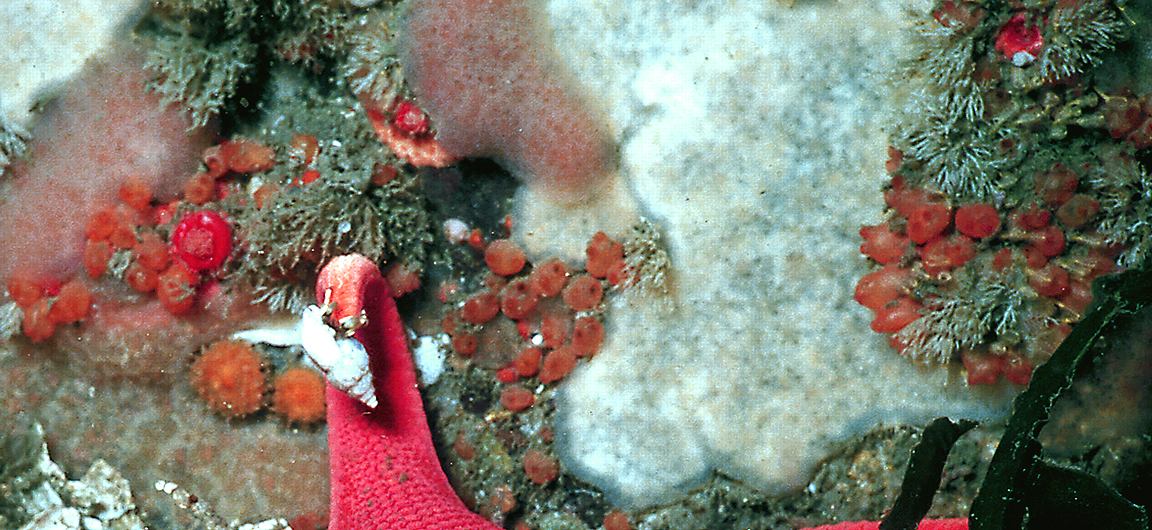
The small orange tunicates are always colonial.
Domain Eukarya
Kingdom Animalia
Phylum Chordata
Subphylum Urochordata
Class Ascidacea
Order Pleurogona
Suborder Stolidobranchia
Family Pyuridae
Genus Metandrocarpa
Species taylori
Common Name: orange social tunicate
The common name for Metandrocarpa taylori is “colonial sea squirt”. This name comes from the animal’s ability to squeeze (“squirt”) out water if one removes them from their underwater home. Whilst they seem to be quite simple organisms regarding their shape, sea squirts are in fact quite close to humans on an evolutionary scale – they’ve got a spine.
Sea squirts belong to the phylum Chordata (as shown in the table above), which includes all animals with a spinal chord, a supporting notochord (backbone), and gill slits at one point in their lives–everything from fish to humans. Tunicates have all these features as larvae. A young tunicate larvae will swim around for some time, find a rock or another hard surface to settle down and make itself stick to this surface with adhesive organs. It then starts changing, rearranges its organs (loses the tail, degrades its nervous system) and becomes a full grown sea squirt. Sea squirts possess both sex organs, but are physiologically unable to self-fertilize.
Tunicates actually “wear” tunics. They secrete the leathery sac–called a tunic–that protects the animal. There are two openings in the sac, called “siphons.” Cilia on the pharynx move about to create a current and draw water in through the incurrent siphon. The water is then filtered through the mucus-coated pharynx, which traps food particles. Oxygen is drawn from the water as it passes through the gill clefts, and moves out through the excurrent siphon.
Divers at Race Rocks will be able to observe different kinds of sea squirts in or near rock niches. They settle down in patches of about 8-9 cm diameter. Sometimes one can also find a patch of sea squirts grown on kelp, which are mostly another species, metandrocarpa dura.
Suggestions for further research:
1. How do different factors – current, sea temperature, light – influence the water circulation in the sea squirts? Which influence does this water circulation have on the sea squirt’s direct environment?
2. In which depths do sea squirts grow? Does depth influence their growing? How far can the larvae move before the settle down and what influences their choice of location?
Sources:
http://www.umassd.edu/Public/People/Kamaral/thesis/SeaSquirts.html
http://www.ucmp.berkeley.edu/chordata/urochordata.html
Marine Invertebrates of the Pacific Northwest, Eugene N Kozloff, 1996, University of Washington Press
Keys to the Marine Invertebrates of Puget Sound, the San Juan Archipelago, and Adjacent Regions, Eugene N. Kozloff and others, 1974, University of Washington Press
Other Members of the Subphylum Urochordata at Race Rocks.
Jeremias Prassl (PC yr 29)
 The Race Rocks taxonomy is a collaborative venture originally started with the Biology and Environmental Systems students of Lester Pearson College UWC. It now also has contributions added by Faculty, Staff, Volunteers and Observers on the remote control webcams.
The Race Rocks taxonomy is a collaborative venture originally started with the Biology and Environmental Systems students of Lester Pearson College UWC. It now also has contributions added by Faculty, Staff, Volunteers and Observers on the remote control webcams.


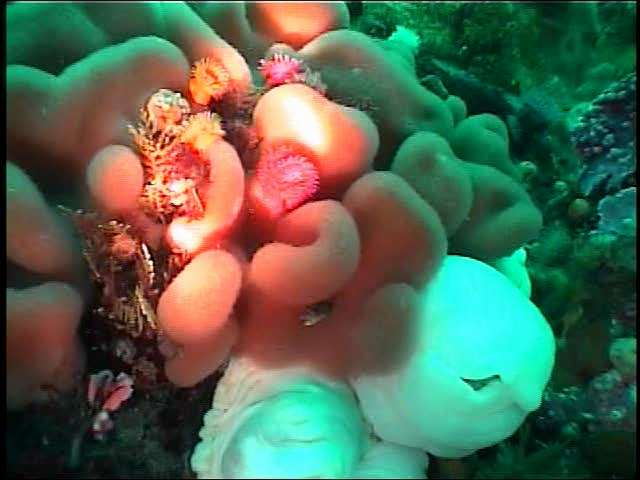
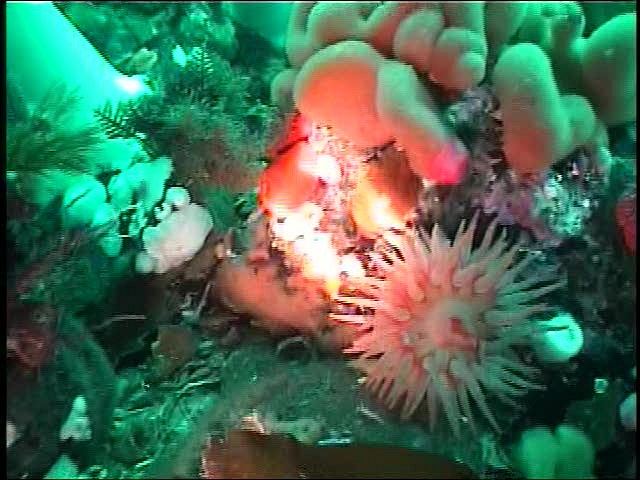
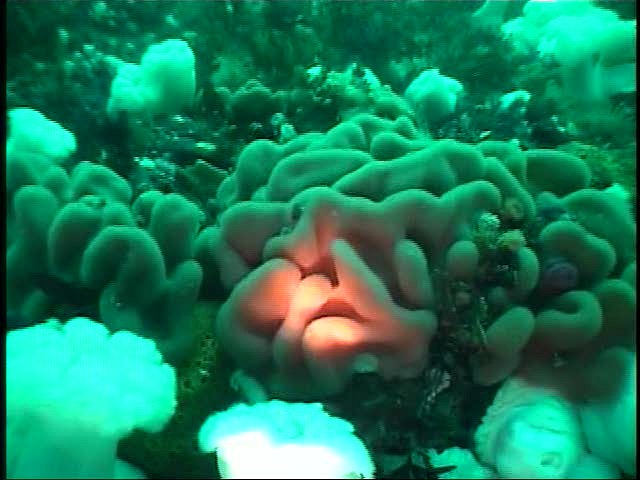
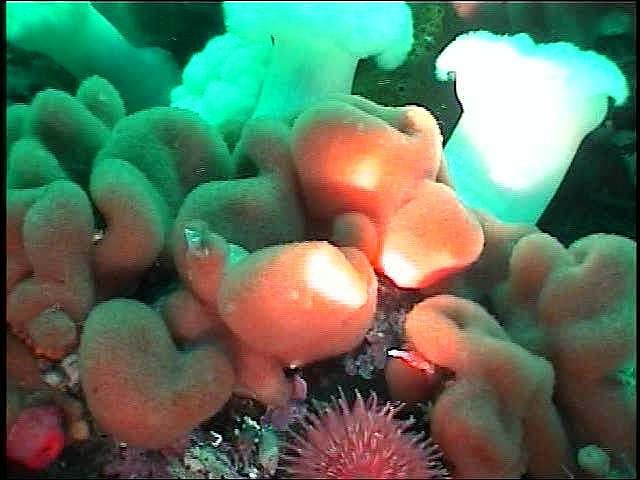
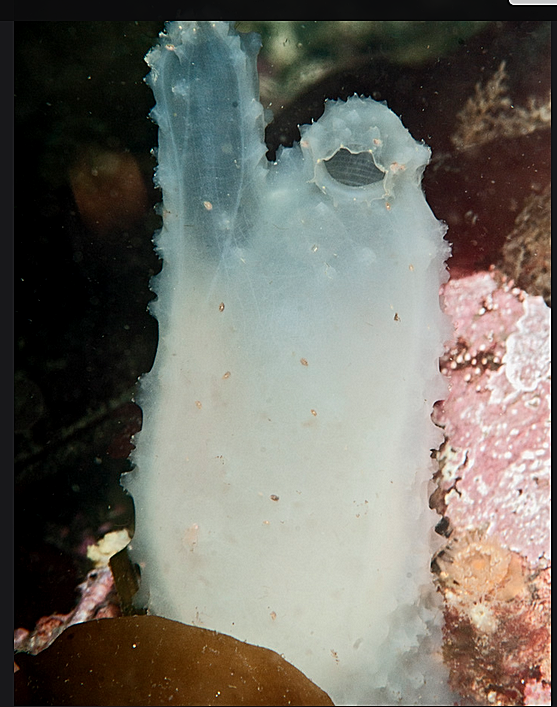
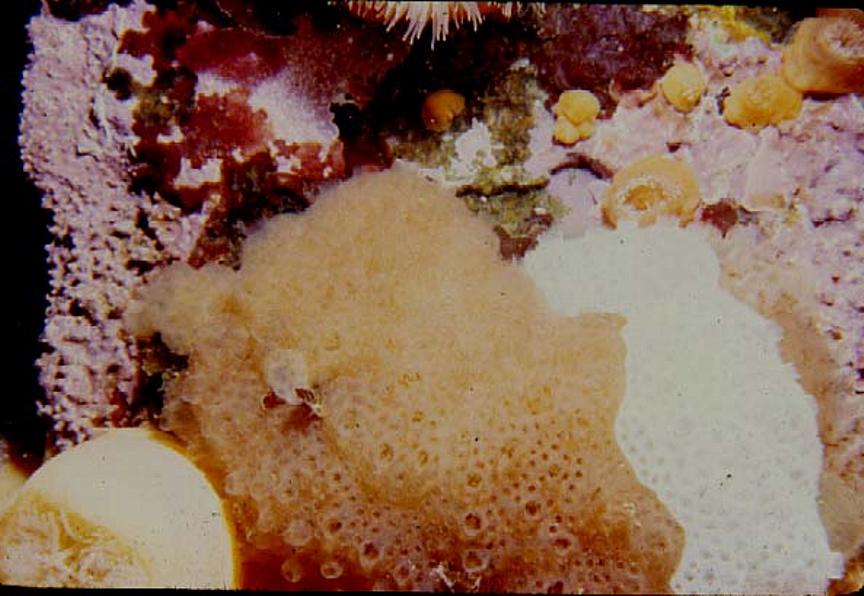
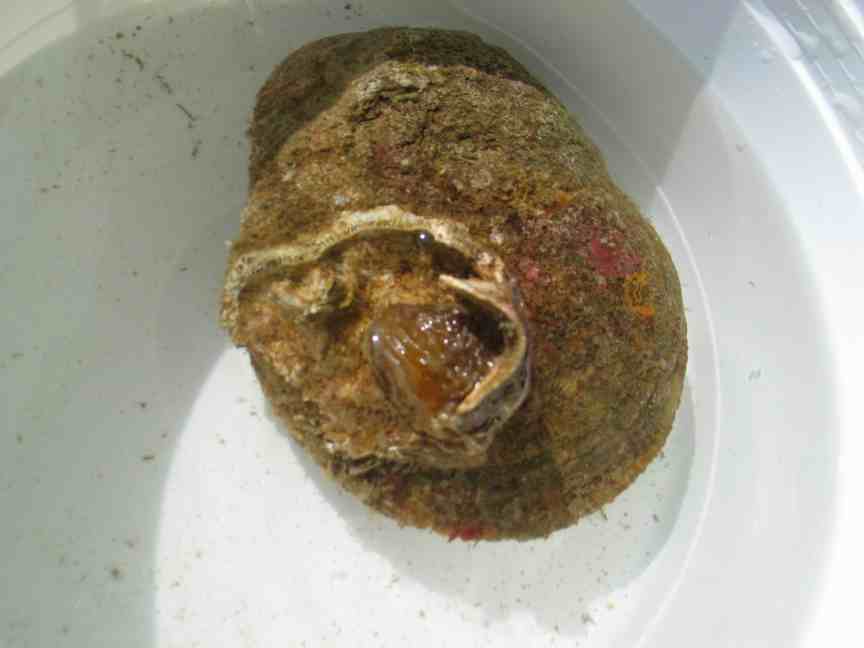
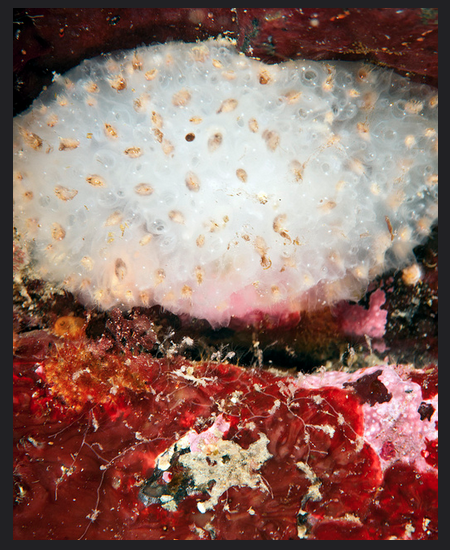
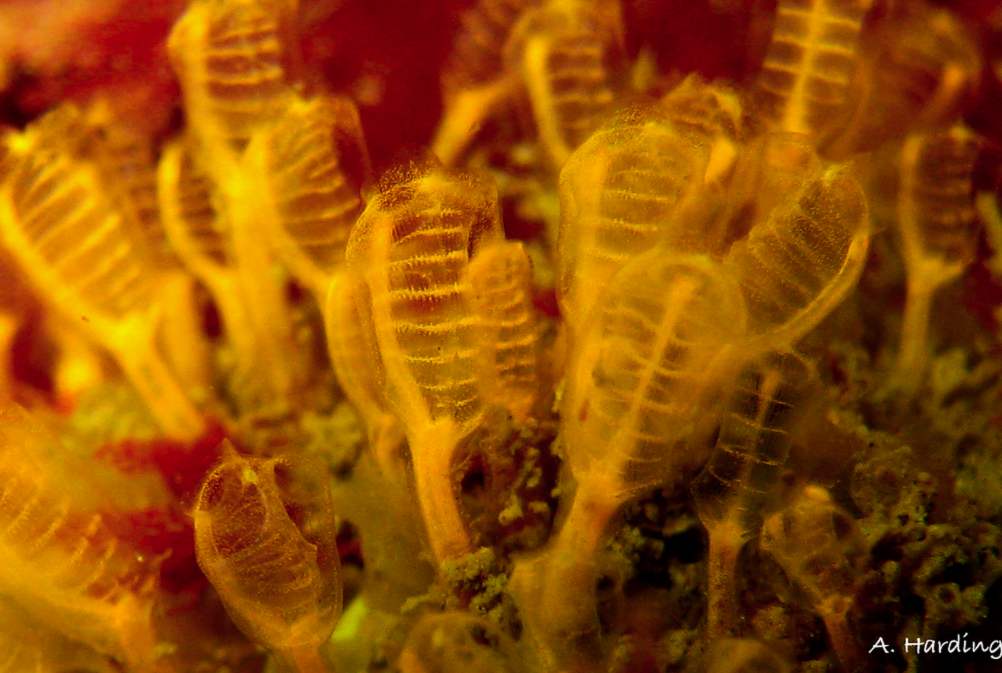
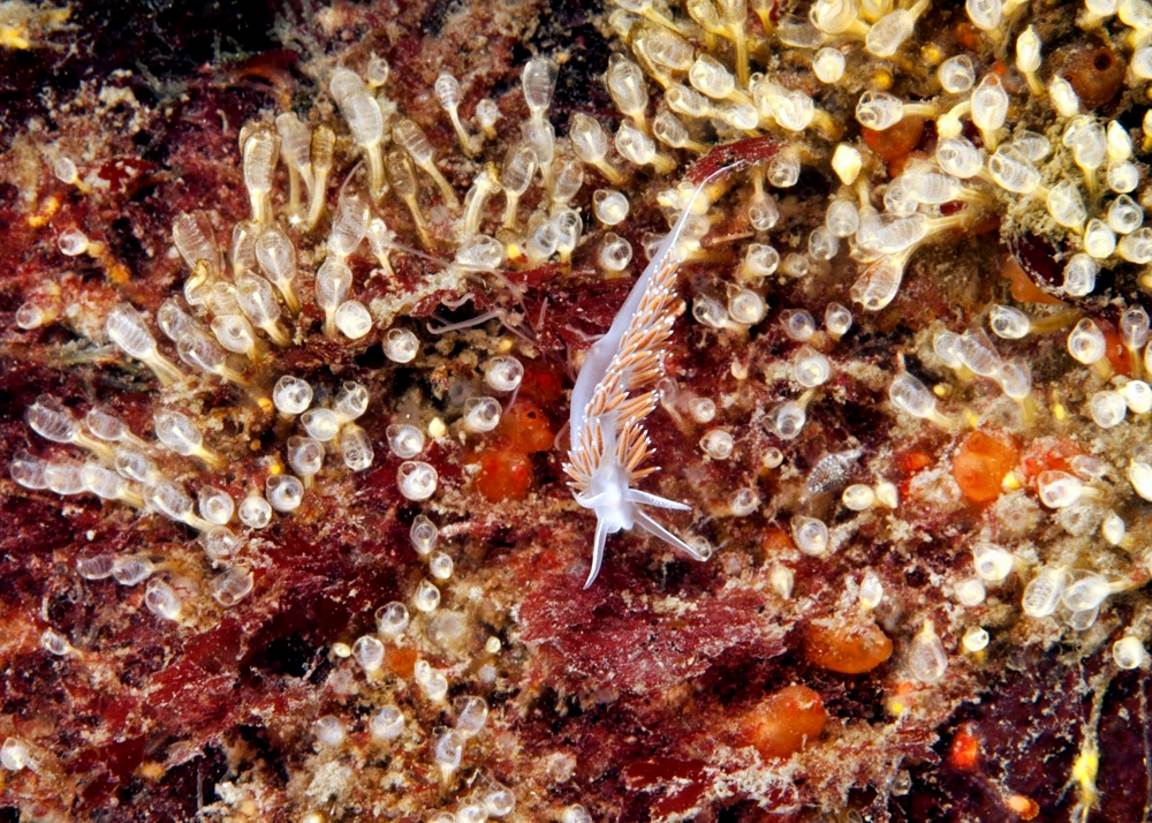
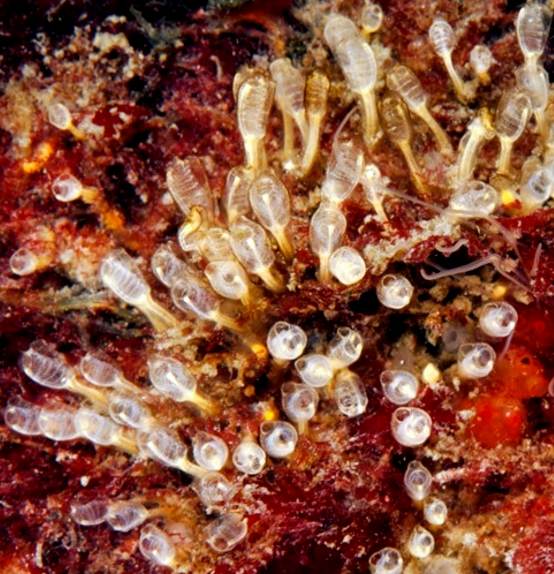
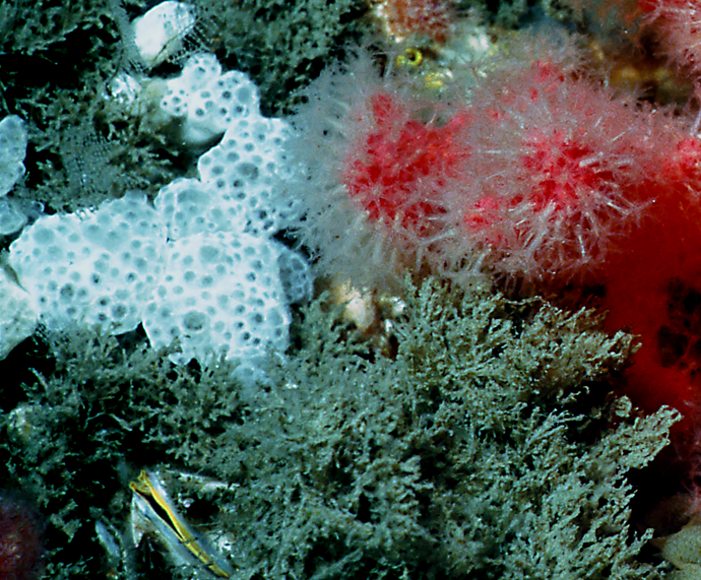
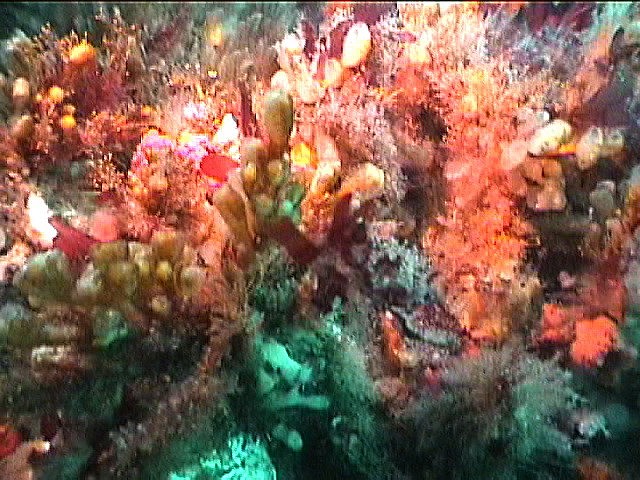
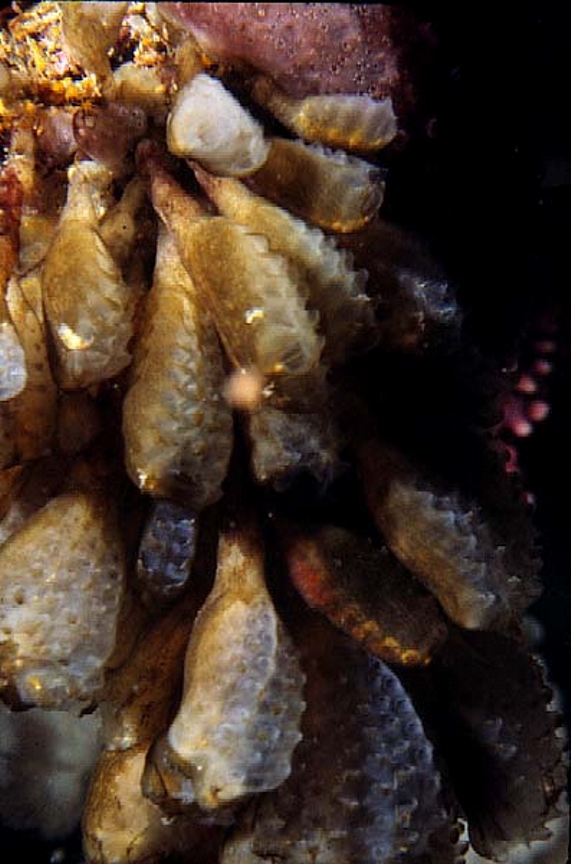

 The photo above is derived from the one above. Here the nudibranch Dendronotus albus is feeding on the tuniates.
The photo above is derived from the one above. Here the nudibranch Dendronotus albus is feeding on the tuniates.
